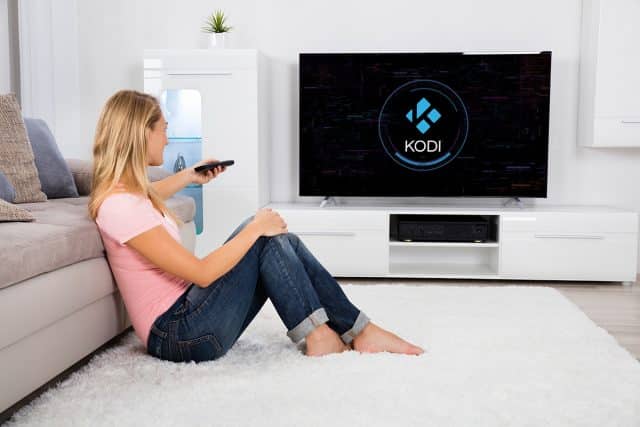LibreELEC 11 Linux distro arrives, now with Kodi 20 'Nexus'

Two months ago, the Kodi Foundation released Kodi 20.0 'Nexus', the latest incarnation of its hugely popular home theater software. The new release comes with a wealth of changes, fixes and new features, including support for multiple instances of binary add-ons, AV1 Video support, and a massive rework of the subtitle system.
Today sees the arrival of the latest version of LibreELEC, a lightweight Linux distro that is designed to run Kodi on a variety of platforms including Raspberry Pi and Orange Pi. LibreELEC 11's big new change is it now runs Kodi 20.
SEE ALSO: Kodi 20.0 'Nexus' is available to download now -- here's what's new and improved
While LibreELEC 11 offers all of the new features from Kodi 20, there are some known issues to be aware of across the various platforms:
RASPBERRY PI
- 50/60fps H264 HW decoding may need force_turbo=1 or core_freq_min=500 in config.txt to avoid AV-sync-issues/skipping
- Kodi at RPi4 runs in 4096x2160 instead of 3840x2160 on 4k TVs after fresh installation. Configure Kodi as described at the wiki and optionally add hdmi_enable_4kp60=1 to config.txt and enable HDMI UltraHD Deep Color in your TV’s HDMI port configuration to get 4kp60 modes
GENERIC (x86_64)
The Generic image now runs the same GBM/V4L2 graphics stack we have long used with ARM platforms. It now supports HDR with recent AMD and Intel GPUs. We have added a Generic-Legacy image that runs the older X11 graphics stack used in LE v7-v10. You can update between the GBM and X11 images without issues.
Use the Generic-Legacy image if:
- You need support for nVidia GPUs
- You need support for the Chrome Browser add-on
- You see graphical glitches on older hardware, e.g. NUC 6th Gen, AMD GPUs
NB: In the last year nVidia has made progress in their support for modern graphics standards. Drivers are now mesa/GBM compatible but still have dependencies on Wayland which we do not use, and Kodi has no plan to support proprietary NVDEC decoding (but VDPAU remains). We still recommend users avoid investing in nVidia GPUs.
ALLWINNER
Support for the Orange Pi 3 LTS board is still "work in progress" and there are known problems.
AMLOGIC
Support for Amlogic S905, S905X/D, and S912 devices resumes. H264 playback and seeking is solid. HEVC playback is ok and seeking recently improved from 2/10 to maybe 7/10. HDR works with HEVC/VP9 media on S905X/D and S912 devices. Multi-Channel PCM and Pass-Through audio works on HDMI up to 7.1 channels. With typical 1080p oriented media collections the AMLGX image is quite usable and provides access to the latest Kodi release and compatible add-ons. To be crystal clear: the AMLGX image is not perfect, but cost-of-living is high and $0 updates to old hardware are more appealing to users than $150+ purchases of new hardware. If we resume support (with caveats) fewer old boxes end up in landfill. There’s also an increased chance of people contributing improvements to smooth the rough edges that exist.
To set expectations, here’s the 'No' list:
- No support for updates from older LE releases (clean install is mandatory)
- No support for internal eMMC install except WeTek Hub/Play2 and SBC boards
- No support for SSV6501 and S908CS WiFi chips
- No drivers for in-box DVB tuners
- No hardware deinterlacing
- No HDR to SDR tonemapping
- No formal support for newer S905X2/D2/Y2, S905X3, S922X, A311D devices (read below)
The reason for not formally supporting newer hardware generations is all about hardware decode drivers and user expectations. Amlogic hardware video decoding requires the "VDEC" driver for older GXBB/GXL/GXM hardware and "HEVC" driver (driver, not codec) for newer G12A/G12B/SM1 hardware, and both generations prefer a later iteration of "multi" decoder firmware. The current upstream driver code attempts to mix both drivers in a common codebase with partial success and does not support multi firmware blobs. As a result, the current drivers work well on older hardware, but bugs prevent 10-bit and 4K output on newer hardware, and users with newer and (on paper) more capable hardware generally have higher expectations and more demanding media. To avoid negative feedback and user frustration; if you have newer Amlogic hardware our recommendation is to run Kodi on the Android install that shipped with the box. If you choose to run AMLGX images on newer hardware; expect 1080p maximum output, and minimum interest from developers if you post known issues in the forums.
AMLGX has a different boot and SD card preparation process, i.e. no renaming of device-tree files, so PLEASE READ THIS WIKI ARTICLE for more info on differences between AMLGX and legacy images.
DVB ADD-ONS
DVB Add-Ons are currently deactivated. Digital Devices and TBS have currently no support for recent kernels so we are out of options. If you require support for those devices please stay at LE10.
MAKE BACKUPS
We always recommend you to create a backup BEFORE you upgrade. Otherwise, rolling back is basically impossible. Kodi does not support downgrades; if it ever worked for you in the past it was luck, not design. The Python3 changes that took place between LE9.x and LE10.x guarantee in-situ upgrade challenges, so unless you are already running LE10 a clean install is mandatory.
LibreELEC 10.0 installs will not automatically update, but you can manually update. If you’re running an older version you’ll need to perform a clean install.
You can download LibreELEC 11 with Kodi 20 'Nexus' from here.
Photo credit: Andrey_Popov / Shutterstock
